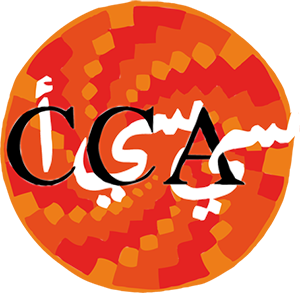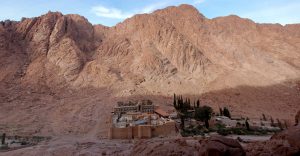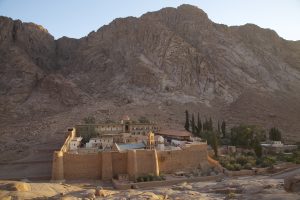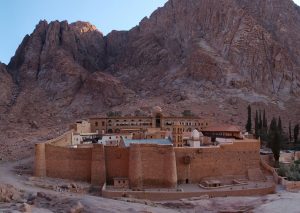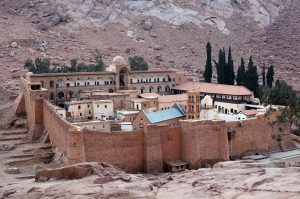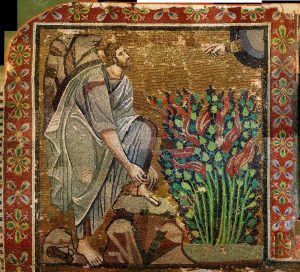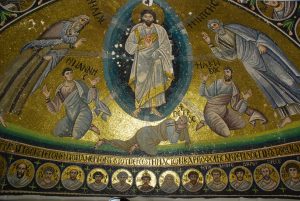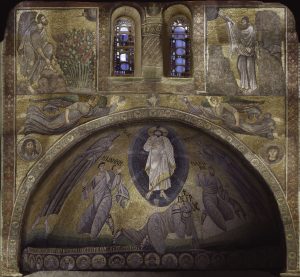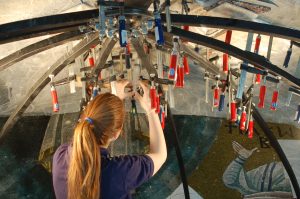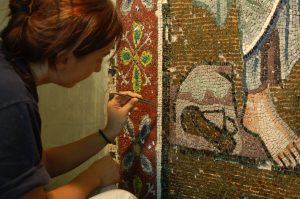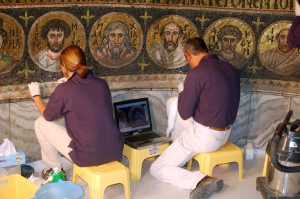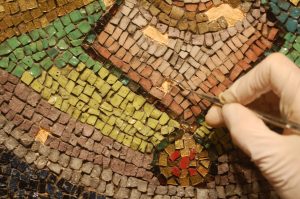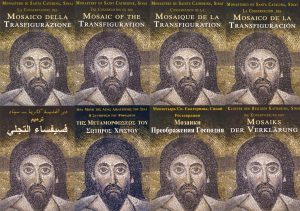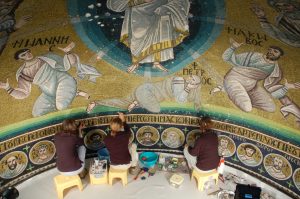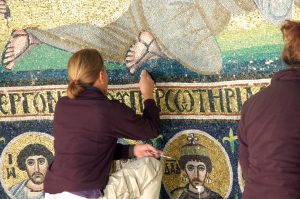Introduction
The mosaic of the Transfiguration covers a surface of 46 m2 in the apse and the arch above it in the basilica of the Monastery of St. Catherine. Created in the 6th century at the request of the emperor Justinian, it has a rich chromatic range of glass paste, glass, stone, gold and silver tesserae. The mosaic is a jewel of early byzantine art. Over the centuries, it has suffered extensive damage due to earthquakes and intense visitation by pilgrims from all corners of the world.
Some of the signs of deterioration were detachment of the preparatory layer from the wall, bulges in the mosaic surface, and lacunae (gaps) in the tesselatum. These problems led the monastic community to undertake a delicate program of consolidating and conserving the mosaic, and the CCA, Centro di Conservazione Archeologica, was asked to do the restoration. The work began in 2005, thanks to funding from the Emir of Qatar, Sheik Hamad bin Khalifa al Thani, as well as grants from the Getty Foundation following a project plan that was developed by CCA in 2001 for the Getty Conservation Institute (GCI). The long and delicate project was completed in April 2016.
